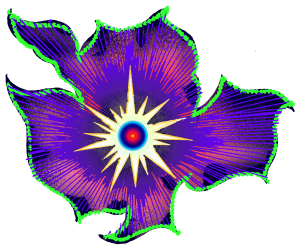A non-exhaustive vocabulary of the planetary bodies, their approaches and correspondences in the tangible world. This glossary is ongoing and is treated as a building block in accomplishing astrological grammar. It includes the gestures of each planet and selected significant (though initial) mundane embodiment, but are not exclusive to them. Alchemical qualities and ensouling capacities are relegated for future workshops.
Personal Planets

Mercury
The celestial messenger completes its orbit around the Sun in 88 days. Viewed from the earth, Mercury is never more than 28° from the Sun, and can only be viewed for relatively short periods in the sky. Among the planets, it is closest to the Sun. It spends 14 to 30 days in a sign (contingent on their direct or retrograde course). Mercury rules Gemini and Virgo.
Principles of Mercury
- Approach to communication
- Expression of ideas
- Perception and how one receives in formation
- Powers of discrimination
- Seat of reason
- Skill, manner of speech, manual dexterity
- The quality that influences one’s thought process
- Urge to establish contact
Mercury in the world
- Broadcasting structures, journalism, media
- Commerce, physical consumer and business markets
- Couriers, mail, postal system
- Educational system, schools
- Informants and witnesses
- Jesters and trolls, embodiments of duende
- Lost & found
- Middle management, mediators, ambassadors
- Short-distance transit
- Youth and children
- Psychopomp – flitting between worlds, places, ideas
Body & plants
- Aromatics
- Brain plasticity
- Digestive tract
- Dill
- Gotu Kola
- Fennel
- Lavender
- Majoram
- Nervous System – Central NS (brain & spinal chord), Sympathetic and Parasympathetic NS, Sensory, Motor coordination
- Parsley
- Pathology – specific occurences such as epilepsy, vertigo, speech impairment, asthma, dyslexia, rhythm issues, coughs, sleep rhythm, neurodivergent ways of thinking
- Respiratory System
Objects, material things and spaces
- Bags, luggage, satchels
- Bubbles
- Elevetaor
- Keys
- Mirrors
- QR codes
- Receipts
- Thermometers
- Traffic lights
- Writing and art supplies
Venus
Never more than 48° from the Sun as seen from Earth, Venus takes 225 days to circuit the Sun and 1.5 years to go through the zodiac. More visible than Mercury, Venus is seen as morning and evening star. This planet goes retrograde every 2 years and forms a 5 petal orbit. Venus stays up to 30 days in a sign while direct in course and rules Taurus and Libra.

Principles of Venus
- Approach to enjoying life
- Facet of love
- How we open up in relationships
- Pathway to communion, unification
- Quality of reciprocity
- Sense of worth and value
- Taste and personal sense of aesthetic
- Where we look for peace and harmony
Venus in the world
- Agriculture and farming
- Arts, art worlds and culture
- Entertainment industry
- Feminism and queer discourse
- Glamour, cosmetics and fashion
- Hospitality
- Money and financial institutions
- Pageants, parades and fiestas
- Seamstresses and weavers
- Teamwork
Body & plants
- Blood refinement
- Catnip
- Chickpeas
- Daisies and roses (flowers that are five-petalled, softer in color with “floral” scents, in general)
- Kidneys
- Mint
- Mugwort
- Phlegmatic humors
- Pathology – diabetes, leaking gut, STI’s, vein disorders
- Throat
- Thymus
Objects, material things and spaces
- Articles of adorment (i.e. jewelry and make-up)
- Courtyards, fountains and gardens
- Clubs
- Handkerchiefs
- Gifts
- Ointments, balms, perfume
- Pastries, ice cream, all sorts of desserts
- Vineyards

Mars
Mars takes about 2 years for a full orbit around the sun. Its axis of rotation is 2 degrees close to the earth’s own axial tilt – a detail often referenced to demonstrate similar seasons with earth. Smaller than the earth, it is only larger than Mercury. Mars spends six to seven weeks in a sign, and goes through retrograde motion every 2 years. It rules the sign Aries, and co-rules Scorpio with Pluto.
Principles of Mars
- Our individual mode of defense, gut reaction
- Represents our outward expression, direct action
- The manner in which we prepare for an encounter
- “Fight” style
- Quality of energy in decision-making or achieving clarity
- The tone of our stamina
- The site of our passions/ where we need to win
Mars in the World
- Military sites and national defence policies
- Athletics, sports arenas, and tournaments
- Conflict areas
- Conquest and violent colonialism
- Debate and campaign events
- Activism
- Mass demonstrations and protests
- Constructions sites and workshops for metal, arms or sharp tools
- Acute outbreaks/ epidemics
- Noise and commotion
Body & Plants
- Blood and arteries
- Adrenal functions
- Catabolic metabolism
- Bile
- Gallbladder
- Flare-ups and inflammation
- Garlic, capsicums, ginger, shallots, black pepper, mustard, horseradish, coriander
- Nettle, hawthorn, angelica root
- Tobacco
- Caffeine
- Honeysuckle, thistle, Rhododendron
- Rhubarb, quinine
Objects, material things and spaces
- Operating theatres, emergency rooms
- Iron, saltpetre, arsenic
- Hardware
- Foundrys, hearth
- Knives, ice picks, javelins, needles, razors and pointed tools
- Weapons
- Carnelian and red coral
- Stoves and ovens
- Turbines and large machinery
Interpersonal Planets
Jupiter
Jupiter is 11 times the diameter of the Earth, recently identified with 79 moons. It takes 12 years to travel through the chart, and spends roughly one year in a zodiac sign. Jupiter is one of the distant planets still visible from the Earth, being the third brightest natural object in the sky. In traditional astrology, Jupiter rules Sagittarius and Pisces.

Principles of Jupiter
- Characteristic of visioning
- Orientation towards the future, growth
- Motivation to overcome/break limitations and comfort zones
- Moral compass
- Directs us to what risks we take, and for what
- Calls in elevation and opportunity: how we seek to experience trust in life
- Where we show benevolence towards others
- All systems that make sense of the world around us
- Sense of purpose, synthesis
Jupiter in the World
- Governance and law
- High courts, diplomacy and treaties between borders/nations
- Expansionism, imperialism
- Ideology and belief systems
- Guru-led communities, encounters with teacher/mentor figures
- Justice systems
- Global capital, treasuries, financial institutions
- Vision quests, pilgrimage, ceremonies and extensive rituals
- Banquets and galas
- Charity and foundations
Body & Plants
- Liver, adipose tissue, metabolism
- Hips and thighs
- Cerebrum
- Sanguine temperament
- Burdock, mulberry tree
- Red clover and dandelion
- Borage and betony
- Lemon balm, sage, agrimony
- Clove, mace, nutmeg
- Melons, grapes, grapefruit, and bilberries
Objects, material things and spaces
- Temples, cathedrals, altars
- Casinos and gambling
- Encyclopedias, almanacs, anthologies of religious scriptures
- Contracts, invoices and licenses
- Medals, trophies, awards
- Orchards, botanic gardens
- Schools of higher learning

Saturn
Before the discovery of Neptune, Uranus and Pluto, Saturn indicated the visible limitation of space thus earning the archetypal understanding of boundaries and edges. Its diameter is nine times and its mass 95 times that of Earth. Saturn takes 29 years to travel through a chart and traditionally rules Capricon and Uranus.
Principles of Saturn
- Form-making, incarnation, solidification (while the other end is bondage)
- Breakdown that precedes breakthroughs
- Anchoring spirit in material world
- Owning up to our authority
- Attitudes towards organization
- Contraction, caution, reservation
- Retentive dimension of shame, worry, fear, self-inflicted punishment
- Drive towards maturity, sobriety, wisdom
- Taking time, and actions that prioritize endurance (on the other end is inertia)
- Mastery, rigor
Saturn in the World
- Tradition, and long-standing institutions
- Merit systems, stages of recognition (graduation, employment)
- Formal recognition, certifications
- Apprenticeships
- Practicing in disciplines, working towards specialisation in particular fields
- Conservatives, any ideology party or individual that seeks to sustain heritage or legacies
- System of reward and punishment, other systems that actively learn or impose individuals into conceding and control
- Prohibitions and correction in governance
- obra maestra, materpiece
- Duty (karmic responsibilities)
- Labour
- Embodiments of the Senex/ Crone
Body and Plants
- Skeleton, bones and teeth
- Melancholic temperament
- Chronic conditions
- Tension and atrophy
- Aspen and weeping willow
- Trees with long life spans
- Barley, Comfrey
- Herbs and medicines for tissue building, boundary astringents; those that support elimination
Objects, material things and spaces
- Entrances, thresholds and doorways
- Castles, ruins, caves, graveyards
- Rulers, tapes measures and clocks
- Calendars, maps and plans; inventories and stocks
- Statues, sculptures

